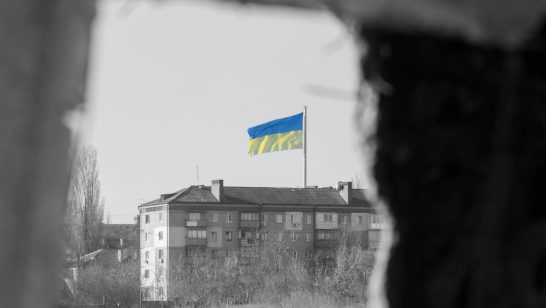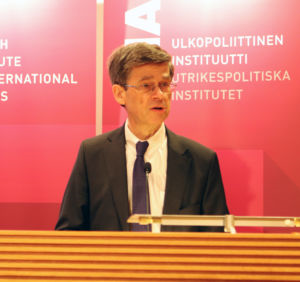
From the very beginning, the odds seemed to be massively against a successful outcome of the 9th NPT Review Conference, which finished in New York on 22nd May. Many experts speculated that the meeting would be derailed by the disagreements over the pace of nuclear disarmament. At the end of the day, it was the Middle East WMD Free Zone conundrum that destroyed the prospects of adopting the final document.
According to the final draft of the outcome document, the UN Secretary General was to convene a conference on the establishment of such a zone “no later than 1 March 2016”. While all states from the region, including Israel, were to be invited, not all of them would need to show up to start the negotiations on drafting the document. That would conveniently circumvent the basic Israeli pre-condition that any process aiming at the creation of the WMD Free Zone would have to include discussions about the overall security situation and regional security arrangements. The US, UK and Canada stepped forward to kill the project, which was clearly designed to corner, name and shame Israel (which would surely reject invitation to the UN conference under the framework given) and complicate life for its friends and partners. All in all, it is difficult to see how this whole diplomatic charade, initiated by Egypt, helped in addressing the current security challenges of the Middle East.
It is very telling, however, that some commentaries seemed to express relief that the showdown over the zone prevented the Conference from adopting a final document. Admittedly, particularly on disarmament, the document reflected the lowest common denominator position. The debates in New York showed a growing discontent of a large group of members with the nuclear policies of the five Nuclear Weapon States and – by extension – with the attitudes of the countries covered by U.S. extended nuclear deterrence guarantees. Yet the final document would end up devoting plenty of space to praising NWS past accomplishments instead of specifying their disarmament-related goals for the next five years. Also, the NWS insistence on a ‘step-by-step’ approach to disarmament sounded particularly hollow at this Review Conference when viewed against the plans by all five NWS to modernize their nuclear arsenals and against the absence of significant changes in their nuclear doctrines which would limit the conditions for use.
In recent years, we have witnessed a massive build-up of support from the NPT member states to put the issue of catastrophic humanitarian consequences of nuclear weapon use for a serious discussion at the Review Conference, symbolized by 107 NPT member states’ support for the “Humanitarian Pledge” to address the “legal gap” allowing the possession and potential use of nuclear weapons by some states. The proposals that emerged from the conference: to re-activate the Conference on Disarmament and to create, via the UN General Assembly, an open-ended working group to discuss the legal dimension, did not reflect the importance that many NPT members attach to the issue of nuclear disarmament.
Failure of the Conference is a better outcome than a rotten diplomatic compromise which would channel the debate to the predictably slow and ineffective grinders of the UN and CD “disarmament” machinery. A group of determined states will now most likely initiate work on the new legal framework prohibiting the use and possession nuclear weapons. If they manage to agree the text of such a treaty before the next Review Conference in 2020 (which seems quite possible), it can be submitted as a contribution of its signatories to the implementation of Article VI. The whole process would also serve as a tool for applying pressure on non-participating member states. Such a pressure could be particularly effective when applied to some countries currently covered by the U.S. nuclear security guarantees, especially Japan and those NATO countries in which anti-nuclear NGO movements can garner support for the ban in the national parliaments.
From NATO’s perspective, the question should be posed whether a member of the Alliance can support a legal ban on the use of nuclear weapons and, at the same time, take part in the formulation and implementation of the Alliance’s nuclear strategy, including (however remote) a decision on the use of nuclear weapons. Some experts claim that international law provides a rationale for supporting the ban while remaining a NATO member. One can imagine, for the supporters of the ban, creating an opt-out from participation in the Nuclear Planning Group and in the nuclear decision-making. Instead of hoping that the momentum towards the ban would somehow fizzle, it would be wise for NATO to analyse the possible impact of a particular member’s public refusal to be defended with nuclear weapons on the political cohesion of the Alliance, risk- and burden-sharing, and on the credibility of collective defence.
Still, even if some extended deterrence countries would support the ban treaty, the hopes of its supporters that the beginning of work on the legal instrument will pressure the NWS, their allies and most of the ‘nuclear umbrella’ countries to fundamentally change their policies are unlikely to be fulfilled soon. In fact, the nuclear dimension of the great power relationships may even grow in prominence with the new presidential administration in the US, or continued Russian and Chinese assertiveness in their respective near abroad.
As a result, in the worst-case scenario the next review cycle end with a 2020 conference to which a group of ‘progressive’ NPT members will come with a draft ban treaty and a feeling of moral superiority, while the NWS, their allies, and most of the “nuclear umbrella” group will arrive with modest disarmament-related achievements and a strong conviction that the first group is detached from the reality of international relations. It is an open question whether in 2020 the NPT would continue to be seen as a common platform which can accommodate all of these positions, and thus a treaty framework worth preserving.
The opinions articulated above represent the views of the author(s), and do not necessarily reflect the position of the European Leadership Network or any of its members. The ELN’s aim is to encourage debates that will help develop Europe’s capacity to address the pressing foreign, defence, and security challenges of our time.



